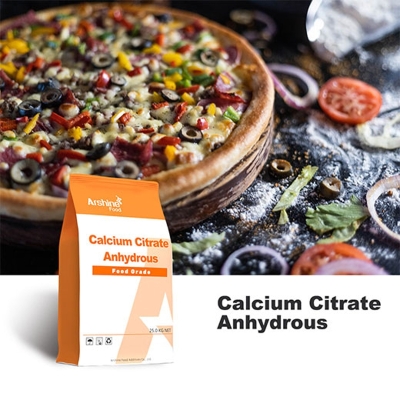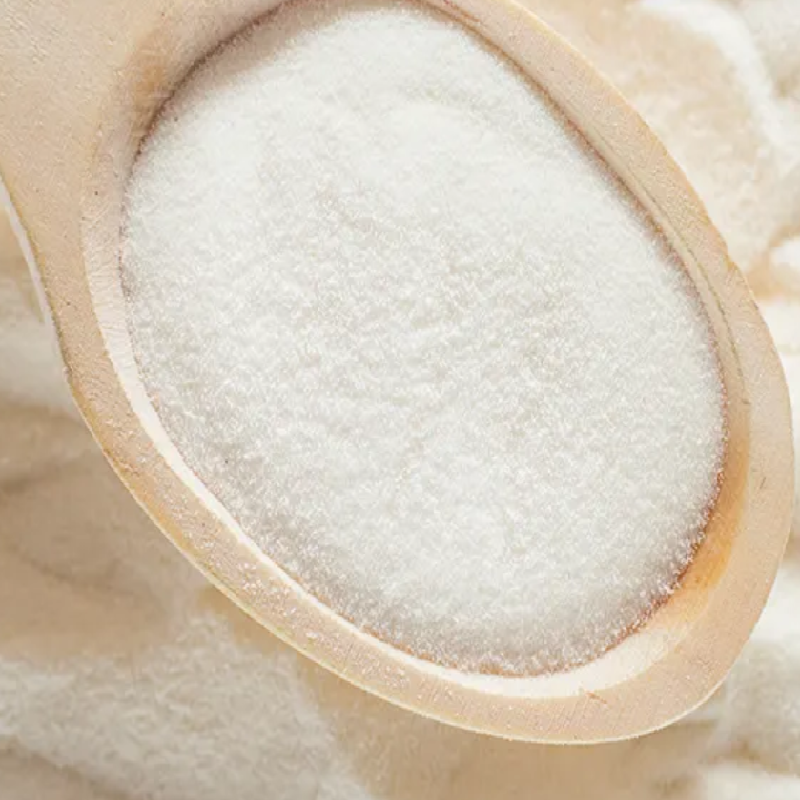-
Categories
-
Pharmaceutical Intermediates
-
Active Pharmaceutical Ingredients
-
Food Additives
- Industrial Coatings
- Agrochemicals
- Dyes and Pigments
- Surfactant
- Flavors and Fragrances
- Chemical Reagents
- Catalyst and Auxiliary
- Natural Products
- Inorganic Chemistry
-
Organic Chemistry
-
Biochemical Engineering
- Analytical Chemistry
- Cosmetic Ingredient
-
Pharmaceutical Intermediates
Promotion
ECHEMI Mall
Wholesale
Weekly Price
Exhibition
News
-
Trade Service
Vomitoxin (DON), also known as deoxynivalenol, is a monothechosenem mycotoxin produced mainly by Aspergillus, Penicillium and Fusarium and is widely found
in cereals, cereal preparations, and animal feed.
DON has gastrointestinal toxicity, cytotoxicity, immunotoxicity, etc.
, and has synergistic toxicity with other mycotoxins, seriously endangering animal and human health
.
Sun Yaning, Yang Suzhen, Zhang Gaiping*, etc.
from the Key Laboratory of Animal Immunology, Henan Academy of Agricultural Sciences, prepared magnetic fluorescent antibody probes by using magnetic nanoparticles, green fluorescent protein and DON monoclonal antibodies, established DON magnetofluorescence immunochromatography test strips, and applied them to the detection of DON contaminants in cereals.
At the same time, DON colloidal gold immunochromatography test strips were established to compare the sensitivity of the two methods and determine the effectiveness
of the new model.
In this study, the one-step method was used to prepare magnetic fluorescent antibody probes for immunochromatographic detection technology, which simultaneously realized sample enrichment and fluorescence signal detection, thereby improving the detection sensitivity, promoting the wide application of magnetofluorescent nanoparticles in the field of immunodetection, and providing technical support
for more sensitive immunochromatographic detection methods.
01 Characterization of superparamagnetic particles
The amount of ferric chloride and sodium citrate in the reaction system was adjusted respectively, and the particle size of the magnetic particles was changed, the results were shown in Table 1, and the particle size of the magnetic particles increased with the proportion of ferric chloride in the reaction system when the other components of the whole system remained unchanged
.
The distribution of magnetic particles is shown in Figure 1, and the results of Fig.
1 and Table 1 show that the distribution peak of magnetic particle No.
1 is narrower and the standard deviation is smaller, indicating that the diameter uniformity of magnetic particle No.
1 is better
.
The transmission electron microscopy scan of magnetic particle No.
1 is shown in Figure 2, showing that the magnetic nanoparticles appear as regular spheres
.
The results of magnetic identification experiments showed that under the action of the applied magnetic field, the magnetic particles could be completely adsorbed at the bottom of the bottle within 1 min, indicating that the prepared magnetic particles had good magnetic properties and could be used for the enrichment detection
of targets in the later stage.
02 DON magnetofluorescence antibody probe identification and optimization
The magnetic identification results of the magnetofluorescent antibody probe are shown in Figure 3A, and the results show that the magnetic particles can be completely adsorbed at the bottom of the reaction cup within 1 min under the action of the applied magnetic field, indicating that the probe has good magnetic properties.
The results of probe immunological and fluorescence performance identification are shown in Figures 3B and 3C, and the results show that the magnetofluorescent antibody probe can be intercepted by the SPA fixed on the NC membrane, indicating that the magnetic particle is successfully coupled with the DON monoclonal antibody and has good activity.
The fluorescence characteristics of the magnetofluorescent antibody probe are shown in Figure 3C, and the test strip in Figure 3B was scanned with a fluorescent strip reader, and the results showed that there was a strong fluorescence signal
at the position of the SPA interception line.
In summary, the experimental DON magnetofluorescence antibody probe conjugated by one-step method was successfully
prepared.
The addition of green fluorescent protein and DON monoclonal antibody was optimized during the preparation of DON magnetofluorescence antibody probes, and the results are shown in Figure 4
.
When the amount of protein added to 200 μL of magnetic beads is less than 1.
25 μg, the fluorescence signal in the magnetic adsorption supernatant completely disappears (adsorption is close to 100%), and with the increase of protein quantity, the adsorption fluorescence value of magnetic beads increases rapidly, and the adsorption ratio gradually decreases
.
When the amount of protein added reached 5 μg, the adsorption ratio was only 40.
87%, and more than half of the fluorescence signal remained in the supernatant, indicating that the protein addition had been excessive, but the adsorption fluorescence value at 5 μg was much greater than 2.
5 μg, so it was determined that adding 5 μg of protein per 200 μL of magnetic beads was the optimal protein amount
.
03 Detection of test strip sensitivity
The naked-eye observation results of DON magnetic fluorescence immunochromatography test strip are shown in Figure 5A, the fluorescence curve obtained by scanning with fluorescence strip reader is shown in Figure 5B, and the standard curve is plotted by peak area value, and the regression equation is y=-0.
562x+0.
921,R2 =0.
990, the IC50 quantified by the test strip was 5.
611 ng/mL, and the detection limit was 1.
089 ng/mL; The sensitivity results of DON colloidal gold immunochromatography test strip are shown in Figure 6, and the sensitivity of naked eye detection is 500 ng/mL (Figure 6A).
The grayscale curve was scanned by the strip reader as Figure 6B, and the standard curve was drawn according to the peak area, the regression equation was y=-0.
543x+1.
485,R2=0.
991, and the IC50 quantified by the test strip was calculated to be 65.
16 ng/mL, and the detection limit was 11.
94 ng/mL
.
Comparing the IC50 of the two methods, the results show that the DON magnetofluorescence immunochromatography test strip is 10.
96 times
more sensitive than the colloidal gold immunochromatography test strip.
04 Detection of strip specificity
Table 2 shows that the cross-reaction rate between DON colloidal gold immunochromatography test strip and common mycotoxins AFB1, OTA, ZEN, FB1 and T-2 is less than 0.
65%, and the cross-reaction rate between DON magnetofluorescence immunochromatography test strip and common mycotoxins AFB1, OTA, ZEN, FB1 and T-2 is less than 0.
06%, indicating that the two DON immunochromatography test strips established in this experiment have good specificity
.
05 DON magnetofluorescence test strip fluorescence signal stability detection
Since it takes 8~10 min to run the DON magnetofluorescence immunochromatography test strip, in order to observe the fluorescence signal in a clean background, the magnetocescence signal stability detection is carried out after 10 min, and the results are shown in Figure 7, and the fluorescence signal shows a significant downward trend
with the extension of time.
Therefore, the test strip result determination time should be strictly controlled, and the result
should be read in about 10 minutes of test strip detection.
06 DON magnetofluorescence test strip spike recovery experiment
Five DON spike-positive wheat samples were detected, and the experimental results are shown in Table 3
.
The recovery rate of addition was between 81.
447%~98.
558%, and the average value was 87.
378%; The coefficient of variation was between 14.
462%~19.
662%, and the average value was 17.
351%, all less than 20%, indicating that the detection method had good accuracy and precision
.
Conclusion
Superparamagnetic particles were successfully prepared by solvothermal method, and magnetofluorescent antibody probes were obtained by conjugating them with green fluorescent protein and DON monoclonal antibodies by one-step method
.
By optimizing the experimental parameters, DON magnetofluorescence immunochromatography test strip and DON colloidal gold immunochromatography test strip were prepared respectively, and DON magnetofluorescence immunochromatography test strip can realize sample enrichment and fluorescence signal detection, and the sensitivity is 10.
96 times that of DON colloidal gold immunochromatography test strip, which can realize the quantitative detection
of DON.
This experiment successfully established the magnetofluorescence immunochromatography test strip mode and applied it to DON detection, which provided technical support
for the application of magnetofluorescent nanoparticles in the field of immunochromatography.
About the corresponding author
Zhang Gaiping, male, born in 1960, doctoral supervisor, academician of the Chinese Academy of Engineering, postdoctoral fellow, researcher
.
In 1996, he was awarded the
Henan Outstanding Youth Science Fund.
He is currently a professor at Henan Agricultural University and director of
Longhu Modern Immunology Laboratory.
In 2009, he was elected as an academician of the Chinese Academy of
Engineering.
In 2013, the People's Government of Henan Province appointed Zhang Gaiping as the president of
Henan Agricultural University.
On December 9, 2013, he was elected as the vice chairman of the 8th Committee of Henan Provincial Association for Science and Technology, and won the title of "Top Ten National Excellent Scientific and Technological Workers Nomination Award" and "National Outstanding Scientific and Technological Workers" of China Association for Science and Technology
.
On June 12, 2016, the Ministry of Agriculture announced the list of members of the 5th Agricultural GMO Safety Committee, and Zhang Gaiping became a member of
the National Agricultural GMO Safety Committee.
In May 2017, it won the National Innovation Competition Award
.
Member of the Agriculture and Rural Affairs Committee of the 13th National Committee of
the Chinese People's Political Consultative Conference.
NO.
2
First author bio
Sun Yaning is an assistant researcher
at the Key Laboratory of Animal Immunology, Henan Academy of Agricultural Sciences.
2004-09 to 2008-07, Henan University of Science and Technology, Food Quality and Safety, B.
S.
; 2008-09 to 2011-06, Henan University of Science and Technology, Biochemistry and Molecular Biology, M.
S.
; 2013-09 to 2017-06, Gansu Agricultural University, Clinical Veterinary Medicine, Ph.
D.
; 2017-08 to 2020-06, Henan Agricultural University, Veterinary Medicine, Postdoctoral Fellow; Since December 2017, he has been an assistant researcher at the Key Laboratory of Animal Immunology, Henan Academy of Agricultural Sciences, mainly engaged in immunological detection technology
.
He has published more than 60 academic papers, including 12 papers published by the first author, including 7 SCI papers; published 1 monograph; Obtained 12 state-authorized invention patents; He has presided over 7 scientific research projects, including 1 sub-project of the National Key R&D Program, 1 China Postdoctoral Science Foundation, 1 Henan Province Key R&D and Promotion Project, Henan Academy of Agricultural Sciences Outstanding Youth Science and Technology Fund Project and 4 other projects; A total of 4 scientific research achievements have been obtained, including 2 second prizes and 1 third prize of Henan Province Science and Technology Progress Award, and 1 first prize of Henan Province Agricultural Scientific Research System Scientific and Technological Achievements
.
This paper "Construction of High Sensitivity Magnetofluorescence Immunochromatography Test Strip Mode and Its Application in Vomitoxin Detection" is from Food Science, Vol.
43, No.
18, 2022, pp.
310-317, authors: Sun Yaning, Yang Suzhen, Yang Jifei, Hu Xiaofei, Chen Xinxin, Zhang Yingshuo, Deng Ruiguang, Zhang Gaiping
.
DOI:10.
7506/spkx1002-6630-20210721-259
。 Click below to read the original article to view information about
the article.







